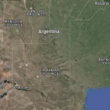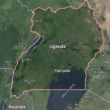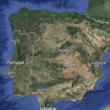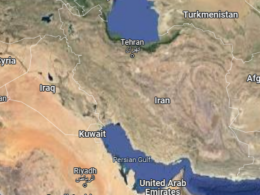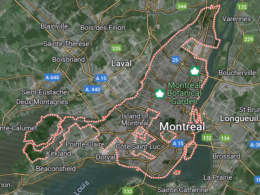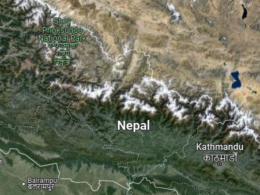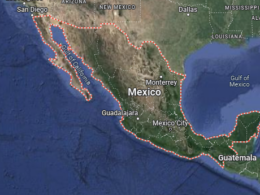Sure! Here are 100 lesser-known facts about Slovakia:
Slovakia is home to more than 6,000 caves, many of which are open to the public.
Bratislava, the capital of Slovakia, is the only national capital that borders two other countries: Austria and Hungary.
The Slovak language is closely related to Czech and Polish.
Slovakia has the highest number of castles and chateaux per capita in the world.
The Spiš Castle is one of the largest castle complexes in Central Europe and a UNESCO World Heritage Site.
Slovakia is home to the world’s tallest wooden altar, located in the Church of St. James in Levoča.
The Slovak Karst region is a UNESCO World Heritage Site known for its unique limestone formations and underground caves.
Slovakia has nine national parks, covering nearly 22% of the country’s territory.
The High Tatras, a mountain range in Slovakia, is home to the highest peak in the Carpathians, Gerlachovský štít.
Slovakia is famous for its mineral springs and numerous health spas.
The country has a rich tradition of folk music and dance, with distinctive costumes and instruments.
Slovakia was part of the Austro-Hungarian Empire until the end of World War I.
The country became independent on January 1, 1993, after the peaceful dissolution of Czechoslovakia.
Slovakia has a strong wine-making tradition, particularly in the Tokaj and Small Carpathian regions.
The Slovak koruna was replaced by the euro in 2009.
Slovakia has a significant Roma population, with rich cultural traditions and heritage.
The Slovak National Museum in Bratislava is the largest and oldest museum in Slovakia.
The Demänovská Cave System is one of the most visited cave systems in Slovakia.
Slovakia’s official name is the Slovak Republic.
The country has a parliamentary republic form of government.
Slovakia has a rich tradition of puppet theater, with many performances for children and adults.
The town of Kremnica has a mint that has been producing coins since the 14th century.
Slovakia is known for its beautiful wooden churches, particularly in the northeastern part of the country.
The town of Banská Štiavnica is a UNESCO World Heritage Site and one of the oldest mining towns in Slovakia.
Slovakia has a strong tradition of winter sports, with many ski resorts in the High Tatras and other mountain ranges.
The Bratislava Castle is a major landmark and offers stunning views of the city and the Danube River.
Slovakia is one of the few countries in Europe where you can see brown bears in the wild.
The Slovak Paradise National Park is known for its beautiful gorges, waterfalls, and hiking trails.
The country has a rich tradition of Easter celebrations, with unique customs such as egg decorating and water pouring.
Slovakia has a significant number of thermal springs, used for both relaxation and medical treatments.
The country has a well-developed network of cycling routes, making it popular for bicycle tourism.
Slovakia is home to many historical towns with well-preserved medieval architecture, such as Bardejov and Levoča.
The country has a strong tradition of beer brewing, with many local breweries producing a variety of beers.
Slovakia has a diverse landscape, ranging from lowlands and plains to mountains and forests.
The Slovak language has many dialects, reflecting the country’s diverse cultural heritage.
The city of Košice is known for its Gothic St. Elisabeth Cathedral, the largest church in Slovakia.
Slovakia has a rich tradition of literature, with many famous writers and poets such as Ľudovít Štúr and Milan Rúfus.
The country has a vibrant contemporary art scene, with many galleries and exhibitions.
Slovakia is a member of the European Union, NATO, the United Nations, and other international organizations.
The Slovak Philharmonic Orchestra is one of the country’s leading cultural institutions.
Slovakia has a well-developed public transportation system, including buses, trams, and trains.
The country has a significant tradition of higher education, with several universities and research institutions.
Slovakia’s economy is based on a mix of industries, including automotive, electronics, and services.
The country has a high level of environmental protection, with many areas designated as nature reserves.
Slovakia has a strong tradition of volunteerism and civic engagement, with many non-governmental organizations.
The country has a rich tradition of folklore and mythology, often featuring magical creatures and heroes.
Slovakia has a diverse culinary tradition, with dishes like bryndzové halušky (potato dumplings with sheep cheese) and kapustnica (sauerkraut soup).
The country has a significant tradition of handicrafts, including pottery, weaving, and wood carving.
Slovakia has a well-developed system of public health care, with many hospitals and clinics.
The country has a high level of literacy and educational attainment.
Slovakia has a strong tradition of scientific research and innovation, with many universities and research institutes.
The country has a significant number of festivals and cultural events, celebrating music, dance, and theater.
Slovakia has a well-developed system of public libraries and cultural institutions.
The country has a rich tradition of public art and monuments, often commemorating historical events and figures.
Slovakia has a well-developed system of public safety and law enforcement.
The country has a high level of political stability and democratic governance.
Slovakia has a significant tradition of religious and spiritual life, with many churches and monasteries.
The country has a rich tradition of social welfare and support, with many programs and services for vulnerable populations.
Slovakia has a significant tradition of public administration and governance.
The country has a well-developed system of public utilities and infrastructure.
Slovakia has a strong tradition of public diplomacy and international relations.
The country has a rich tradition of public education and literacy.
Slovakia has a significant tradition of environmental conservation and sustainability.
The country has a well-developed system of public transportation, including buses, trains, and trams.
Slovakia has a significant tradition of culinary innovation, with many modern chefs and restaurants.
The country has a rich tradition of public sports and recreation, with many facilities and programs.
Slovakia has a significant tradition of public health and wellness, with many programs and initiatives.
The country has a well-developed system of public finance and budgeting.
Slovakia has a significant tradition of public ethics and integrity, with many standards and codes.
The country has a rich tradition of public service and civic duty.
Slovakia has a significant tradition of public history and heritage, with many museums and archives.
The country has a well-developed system of public information and transparency.
Slovakia has a significant tradition of public communication and media, with many newspapers and broadcasters.
The country has a rich tradition of public architecture and urban planning.
Slovakia has a significant tradition of political activism and reform, with many notable leaders and movements.
The country has a well-developed system of public safety and law enforcement.
Slovakia has a significant tradition of public arts and culture, with many theaters, galleries, and cultural centers.
The country has a rich tradition of public festivals and fairs, often featuring traditional music, dance, and crafts.
Slovakia has a significant tradition of public education and literacy, with many schools and libraries.
The country has a well-developed system of public health care, with many hospitals and clinics.
Slovakia has a significant tradition of scientific research and innovation, with many universities and research institutes.
The country has a strong tradition of volunteerism and civic engagement, with many non-governmental organizations.
Slovakia has a well-developed network of cycling routes, making it popular for bicycle tourism.
The country has a significant number of thermal springs, used for both relaxation and medical treatments.
Slovakia has a rich tradition of Easter celebrations, with unique customs such as egg decorating and water pouring.
The country has a strong tradition of winter sports, with many ski resorts in the High Tatras and other mountain ranges.
Slovakia has a significant number of castles and chateaux, reflecting its rich history and cultural heritage.
The country has a well-developed system of public libraries and cultural institutions.
Slovakia has a rich tradition of literature, with many famous writers and poets.
The country has a vibrant contemporary art scene, with many galleries and exhibitions.
Slovakia has a significant tradition of higher education, with several universities and research institutions.
The country has a strong tradition of beer brewing, with many local breweries producing a variety of beers.
Slovakia has a diverse landscape, ranging from lowlands and plains to mountains and forests.
The country has a well-developed system of public health and wellness, with many programs and initiatives.
Slovakia has a significant tradition of public administration and governance.
The country has a well-developed system of public utilities and infrastructure.
Slovakia has a rich tradition of folklore and mythology, often featuring magical creatures and heroes.
The country has a significant tradition of handicrafts, including pottery, weaving, and wood carving.
Slovakia has a rich tradition of public service and civic duty.
The country has a well-developed system of public information and transparency.
**Please note that this post may contain affiliate links. When booking through one of our links, we earn a small kickback at no extra cost to you and it’s a big help to keep the site up and running.


